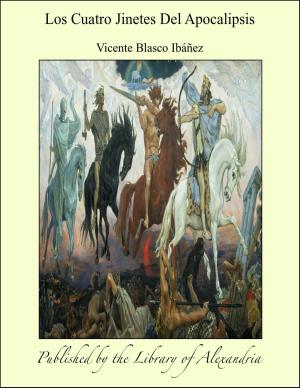| Author: | Ethlyn T. Clough | ISBN: | 9781465501530 |
| Publisher: | Library of Alexandria | Publication: | March 8, 2015 |
| Imprint: | Language: | English |
| Author: | Ethlyn T. Clough |
| ISBN: | 9781465501530 |
| Publisher: | Library of Alexandria |
| Publication: | March 8, 2015 |
| Imprint: | |
| Language: | English |
A glance at the map will show that the Scandinavian Peninsula, that immense stretch of land running from the Arctic Ocean to the North Sea, and from the Baltic to the Atlantic, covering an area of nearly three hundred thousand square miles, is, next to Russia, the largest territorial division of Europe. Surrounded by sea on all sides but one, which gives it an unparalleled seaboard of over two thousand miles, it hangs on the continent by its frontier line with Russia in Lapland. Down the middle of this seabound continent, dividing it into two nearly equal parts, runs a chain of mountains not inappropriately called Koelen, or Keel. The name suggests the image which the aspect of the land calls to mind, that of a huge ship floating keel upwards on the face of the ocean. This keel forms the frontier line between the kingdoms of Norway and Sweden: Sweden to the east, sloping gently from the hills to the Baltic, Norway to the west, running more abruptly down from their watershed to the Atlantic. Norway (in the old Norse language Noregr, or Nord-vegr, i.e., the North Way), according to archaeological explorations, appears to have been inhabited long before historical time. The antiquarians maintain that three populations have inhabited the North: a Mongolian race and a Celtic race, types of which are to be found in the Finns and the Laplanders in the far North, and, finally, a Caucasian race, which immigrated from the South and drove out the Celtic and Laplandic races, and from which the present inhabitants are descended. The Norwegians, or Northmen (Norsemen), belong to a North-Germanic branch of the Indo-European race; their nearest kindred are the Swedes, the Danes, and the Goths. The original home of the race is supposed to have been the mountain region of Balkh, in Western Asia, whence from time to time families and tribes migrated in different directions. It is not known when the ancestors of the Scandinavian peoples left the original home in Asia; but it is probable that their earliest settlements in Norway were made in the second century before the Christian era. The Scandinavian peoples, although comprising the oldest and most unmixed race in Europe, did not realize until very late the value of writing chronicles or reviews of historic events. Thus the names of heroes and kings of the remotest past are helplessly forgotten, save as they come to us in legend and folk-song, much of which we must conclude is imaginary, beautiful as it is. But MOther Earth has revealed to us, at the spade of the archaeologist, trustworthy and irrefutable accounts of the age and the various degrees of civilization of the race which inhabited the Scandinavian Peninsula in prehistoric times. Splendid specimens now extant in numerous museums prove that Scandinavia, like most Other countries, has had a Stone Age, a Bronze Age, and an Iron Age, and that each of these periods reached a much higher development than in Other countries
A glance at the map will show that the Scandinavian Peninsula, that immense stretch of land running from the Arctic Ocean to the North Sea, and from the Baltic to the Atlantic, covering an area of nearly three hundred thousand square miles, is, next to Russia, the largest territorial division of Europe. Surrounded by sea on all sides but one, which gives it an unparalleled seaboard of over two thousand miles, it hangs on the continent by its frontier line with Russia in Lapland. Down the middle of this seabound continent, dividing it into two nearly equal parts, runs a chain of mountains not inappropriately called Koelen, or Keel. The name suggests the image which the aspect of the land calls to mind, that of a huge ship floating keel upwards on the face of the ocean. This keel forms the frontier line between the kingdoms of Norway and Sweden: Sweden to the east, sloping gently from the hills to the Baltic, Norway to the west, running more abruptly down from their watershed to the Atlantic. Norway (in the old Norse language Noregr, or Nord-vegr, i.e., the North Way), according to archaeological explorations, appears to have been inhabited long before historical time. The antiquarians maintain that three populations have inhabited the North: a Mongolian race and a Celtic race, types of which are to be found in the Finns and the Laplanders in the far North, and, finally, a Caucasian race, which immigrated from the South and drove out the Celtic and Laplandic races, and from which the present inhabitants are descended. The Norwegians, or Northmen (Norsemen), belong to a North-Germanic branch of the Indo-European race; their nearest kindred are the Swedes, the Danes, and the Goths. The original home of the race is supposed to have been the mountain region of Balkh, in Western Asia, whence from time to time families and tribes migrated in different directions. It is not known when the ancestors of the Scandinavian peoples left the original home in Asia; but it is probable that their earliest settlements in Norway were made in the second century before the Christian era. The Scandinavian peoples, although comprising the oldest and most unmixed race in Europe, did not realize until very late the value of writing chronicles or reviews of historic events. Thus the names of heroes and kings of the remotest past are helplessly forgotten, save as they come to us in legend and folk-song, much of which we must conclude is imaginary, beautiful as it is. But MOther Earth has revealed to us, at the spade of the archaeologist, trustworthy and irrefutable accounts of the age and the various degrees of civilization of the race which inhabited the Scandinavian Peninsula in prehistoric times. Splendid specimens now extant in numerous museums prove that Scandinavia, like most Other countries, has had a Stone Age, a Bronze Age, and an Iron Age, and that each of these periods reached a much higher development than in Other countries















